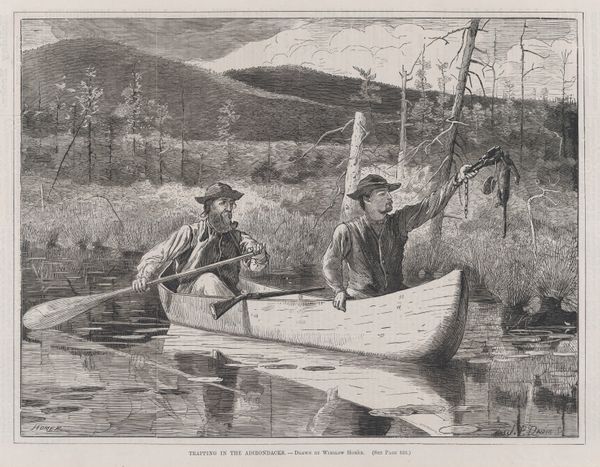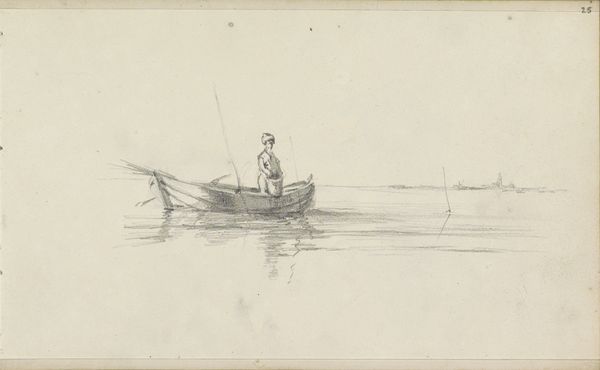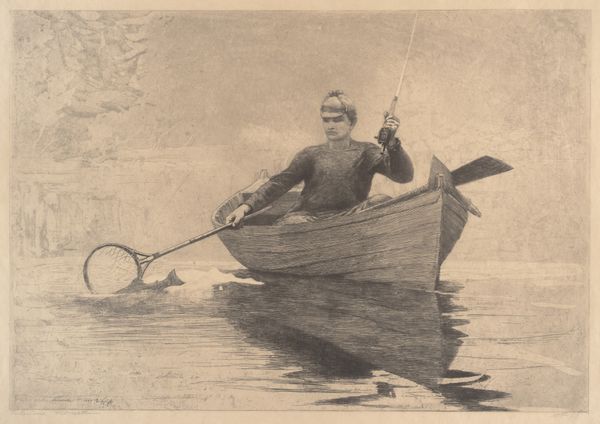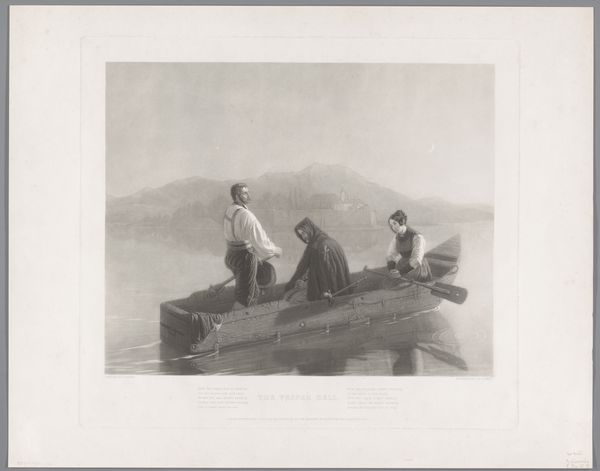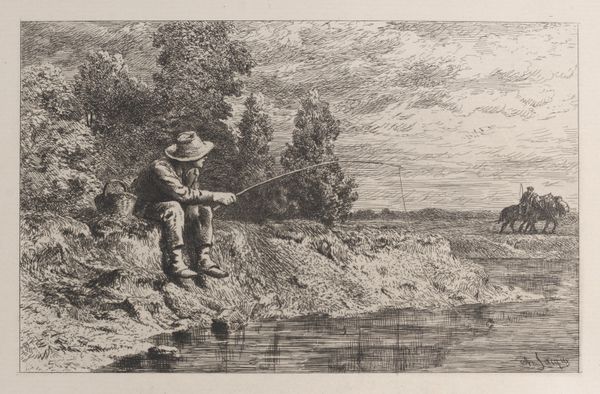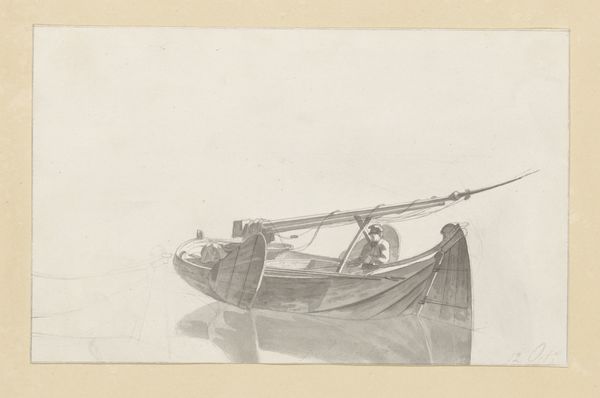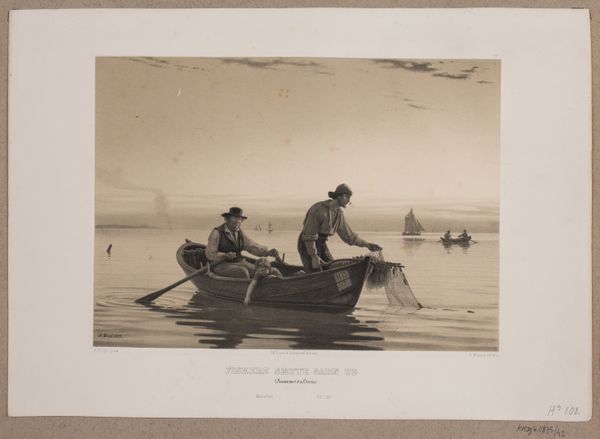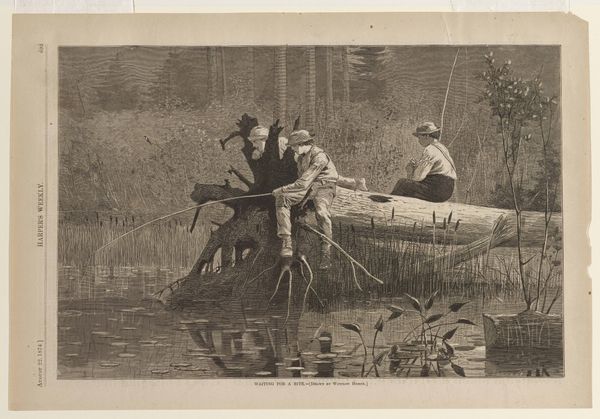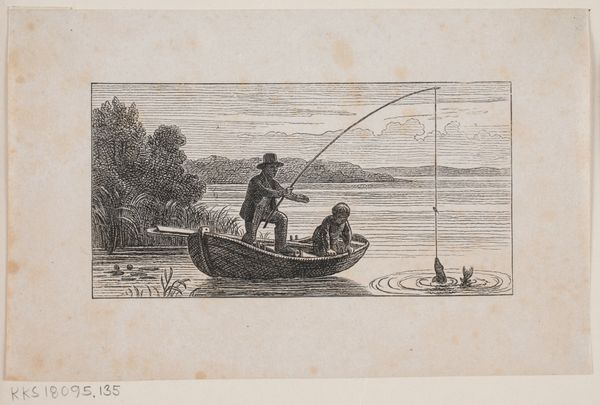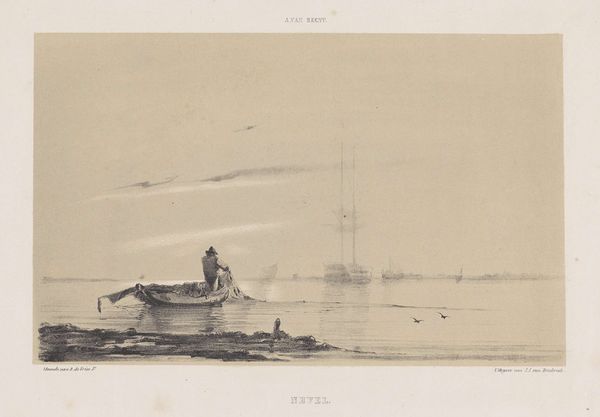
drawing, print, pencil
#
drawing
# print
#
landscape
#
pencil
#
genre-painting
#
realism
Dimensions: image: 189 x 557 mm (not including remarque) primary sheet: 252 x 616 mm secondary sheet: 352 x 698 mm (irregular)
Copyright: National Gallery of Art: CC0 1.0
Curator: Ah, this print really captivates. Here we have William De La Montagne Cary’s “Untitled (Log Raft Fishing),” created in 1892. Notice the delicate rendering in pencil and its masterful evocation of a serene waterscape. Editor: Yes, serene, certainly. The composition, with the low horizon line and the mirroring effect on the water, lends itself to a rather quiet mood. The tonal range is incredibly subtle, too. Curator: Exactly. And look at the way Cary depicts these figures fishing. This wasn’t just about aesthetics, of course. Cary worked as an illustrator, and often depicted scenes from daily life, particularly from the American West. What do you think of what these kind of drawings tell us about labor in art? Editor: That’s interesting in its relation to the material reality. Thinking more broadly about formal arrangements and how Cary structured his work. The line of the fishing rod, the subtle diagonals... there's a geometry underpinning the seeming realism, one that organizes our vision in a very precise way. Curator: Right. Cary, producing images for consumption. Did he grapple with art’s role as a commodity itself? These weren't paintings destined for wealthy collectors but had a democratic kind of purpose in reaching the wider population as illustrations, highlighting that accessibility. How labor itself in a wider cultural or production system intersects with an artistic product and its ultimate value within social sphere is the ultimate test here. Editor: I appreciate that perspective, understanding art's purpose, but focusing purely on the historical context and modes of creation seems to sometimes dismiss its intrinsic formal qualities and what they mean. We lose something valuable when reduce art solely to labor relations and consumer markets. Curator: Perhaps. But I find so much richness when we connect a piece to broader socio-economic forces and artistic practice through which it exists and acquires new, expanded meaning. It deepens, not diminishes, the work, in my opinion. Editor: An important consideration, to be sure. Perhaps what interests me is simply seeing if something so simple – lines in the composition and material contrasts in a waterscape - holds a kind of aesthetic value independent of historical narrative. Curator: A fair point. Either way, it gives us plenty to contemplate in this quiet little scene. Editor: Indeed. Each time offers new way to explore art as more than surface.
Comments
No comments
Be the first to comment and join the conversation on the ultimate creative platform.
